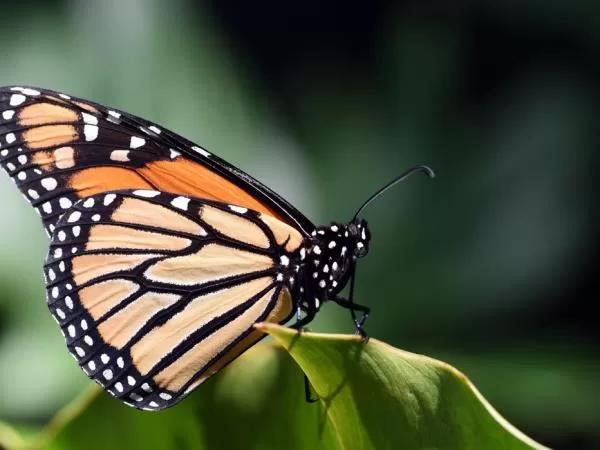
Threats to Monarch Butterflies: Understanding the Challenges They Face
Monarch butterflies, known for their long migrations and striking beauty, face numerous threats that endanger their populations. These challenges range from habitat loss to climate change, making it crucial for us to understand and address these issues to protect these incredible creatures. Here are some of the major threats they face:
1. Habitat Loss
One of the most significant threats to monarch butterflies is the destruction of their natural habitats. The loss of milkweed plants, which serve as both food and breeding grounds for monarch caterpillars, is a major concern. Urbanization, agricultural expansion, and deforestation have all contributed to this loss, leaving fewer safe spaces for monarchs to lay their eggs and nourish their larvae.
2. Pesticide Use
The widespread use of pesticides, particularly neonicotinoids, has a devastating effect on monarch populations. These chemicals not only kill the milkweed plants that monarchs rely on but also harm the butterflies directly. Pesticides can be lethal to caterpillars and adults, disrupting their life cycle and decreasing their chances of survival.
3. Climate Change
Climate change poses a growing threat to monarch butterflies by altering the conditions necessary for their survival. Rising temperatures, extreme weather events, and changes in precipitation patterns disrupt their migration and breeding cycles. Monarchs rely on specific environmental conditions to time their migrations, and these changes can lead to misalignment with the availability of food sources and breeding sites.
4. Deforestation and Loss of Migration Habitat
Monarchs migrate thousands of miles each year, traveling from Canada and the United States to their overwintering sites in Mexico. Deforestation in their migration route, particularly in Mexico, threatens their wintering grounds. Without adequate shelter and resources in these areas, monarchs may struggle to survive the winter months, impacting their chances of reproduction in the spring.
5. Pollution
Air and water pollution can affect monarchs in various ways, from poisoning their food sources to damaging the ecosystems they depend on. Pollutants can disrupt the growth of milkweed and other plants, leading to a decline in food availability. Furthermore, polluted habitats are often less capable of supporting the diverse range of species necessary for monarchs to thrive.
How You Can Help
To ensure the survival of monarch butterflies, it’s essential to take action. Plant milkweed (Asclepias) in your garden, reduce pesticide use, support conservation organizations, and spread awareness about the importance of protecting monarch habitats. By working together, we can help mitigate the threats facing these remarkable creatures and secure a future for them.

Acquire the “Threatened Butterflies (and Their Flowers)” Catalogs
Explore our exclusive catalogs featuring endangered butterflies and the flowers that support them. Choose the version that best suits your interest or collect them all!
From North America to Asia, Oceania, Africa, all continents. And a full version, Global Catalog.
Support conservation efforts while expanding your knowledge—get yours today!
🦋 Part of the proceeds will be donated to organizations dedicated to butterfly conservation.

